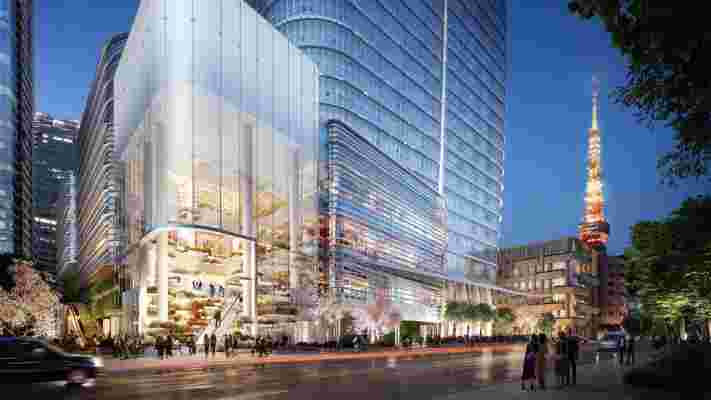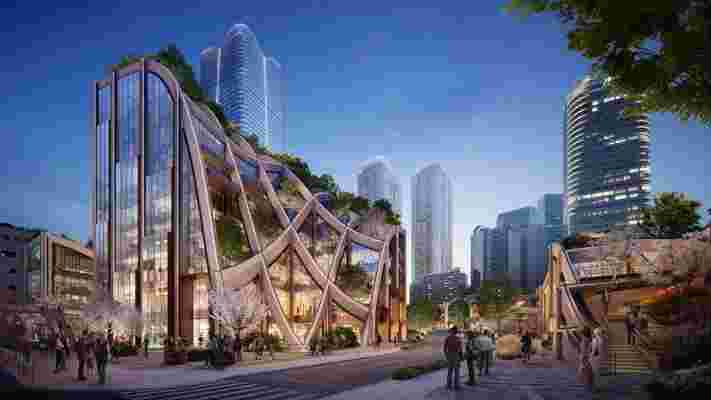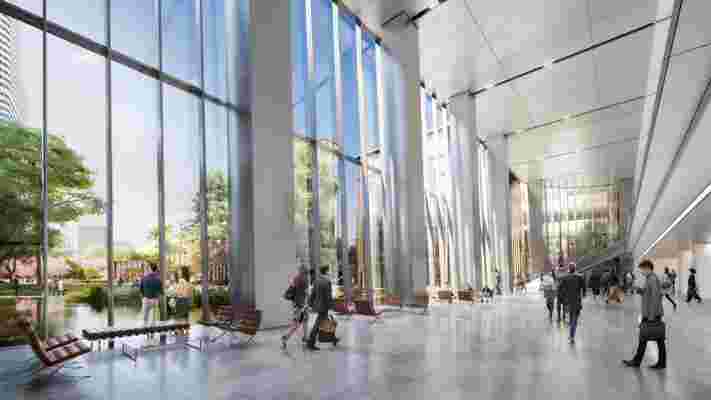Pelli Clarke Pelli is topping its own record. Based in New Haven, Connecticut, the architecture firm has revealed its design for Japan's tallest building, an approximately 1,083-foot-tall (330-meter-tall) skyscraper that will rise in Tokyo and is scheduled to be completed in March 2023. Construction began this month. Located at the midpoint between Tokyo's cultural and business districts, the so-called Toranomon-Azabudai tower is the tallest in a complex of three on the mixed-use site and will overtake the previous height record set by the Abenobashi Terminal Building in Osaka, Japan, which stands at nearly 985 feet (300 meters) and was also designed by the late César Pelli in 2014.

The mixed-use tower is located between Tokyo's business and cultural districts, and will contain retail, office, residential, and educational facilities. London-based designer Thomas Heatherwick is designing the public realm surrounding the tower, which is one in a complex of three, all by Pelli Clarke Pelli.
Crowned by four curved-glass petals on each corner, the Toranomon-Azabudai tower is expected to become a new landmark for the city. (Its height was determined as a complement to the neighboring Tokyo Tower, an Eiffel Tower–inspired observation tower that measures about 1,091 feet tall—333 meters—as Japan's second-tallest structure.) It will also be a skyline indicator of its new neighborhood, the ARK Hills development in Minato City, a 20-acre (8.1-hectare) complex that includes two additional mixed-use towers, a shorter podium building with residential and office spaces, underground train connections, and a curvilinear and extruding public realm designed by London-based designer Thomas Heatherwick of Heatherwick Studio, which will be greened with a lush landscape of lawns, trees, flowers, and waterscapes. One of the other towers on the site by Pelli Clarke Pelli is set to follow its companion and become the second-tallest building in Tokyo—the West Tower, at approximately, 863 feet tall (263 meters).

On the 20-acre site, Heatherwick Studio has designed the public realm.
"Out of our three projects on the site, the main tower is perhaps the most visual on the skyline. It is the first thing visitors will see upon arrival in Tokyo," says firm cofounder Fred Clarke, FAIA, RIBA, JIA. In addition to designing a tower that is transparent, welcoming, and centrally located within its site, the team ensured infrastructure stability and earthquake-resistance technologies by utilizing data from the 2011 Great East Japan Earthquake. The vision of developer Mori Building is to "create a city where people can flee to” in the event of a natural disaster, and the complex will include nearly 64,585 square feet (6,000 square meters) of temporary shelter space to house stranded people and an emergency supply warehouse.

An office lobby of a tower in the complex reveals the green landscape connecting each element.
While not preparing for the worst, the Toranomon-Azabudai complex is envisioned as a "city within a city," says Clarke, where residents can eat, work, play, and live. "Adding a positive note to the Tokyo skyline," he continues, its towers "reach to the sky with a powerful gesture" as some of the nation's tallest. Until, perhaps, the firm tops itself again.
